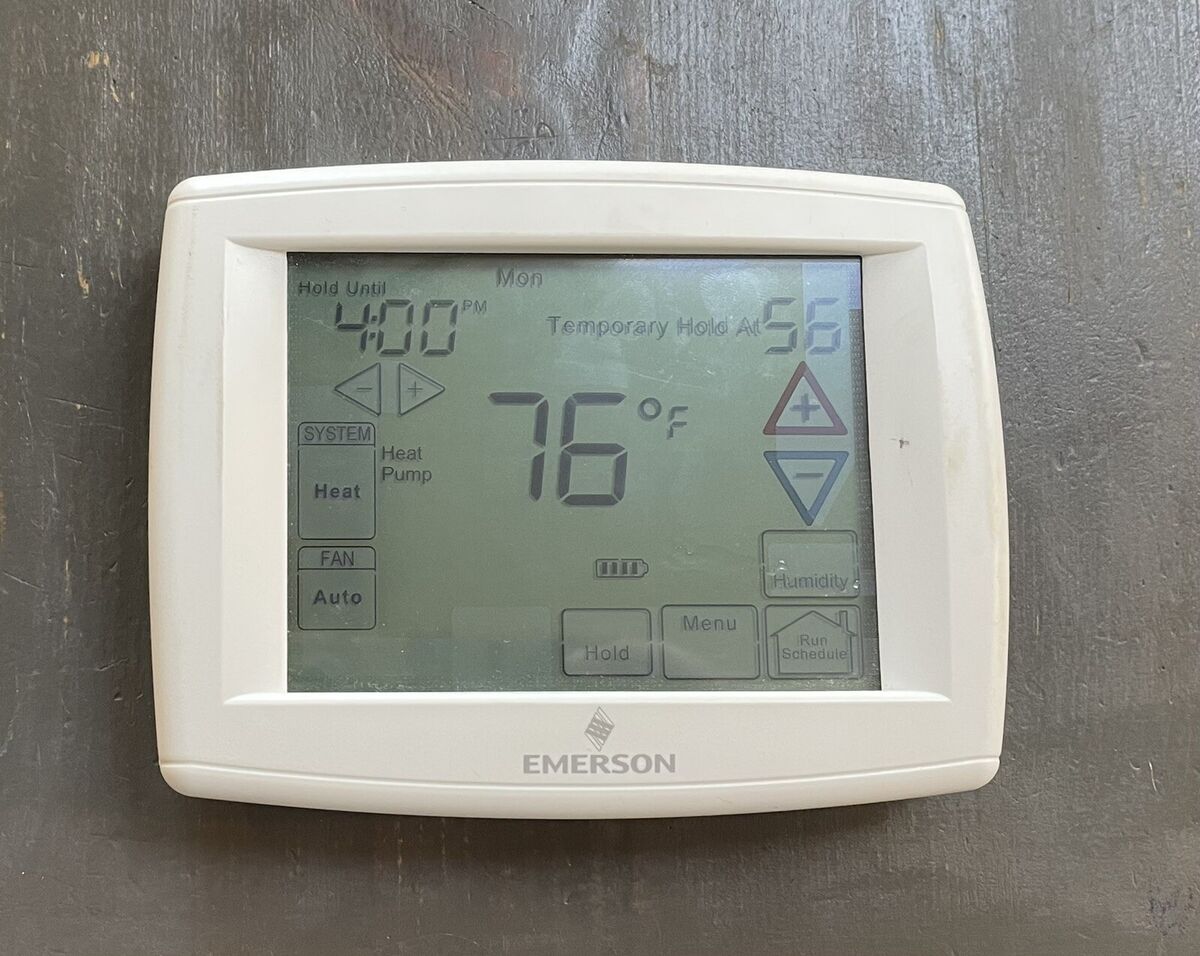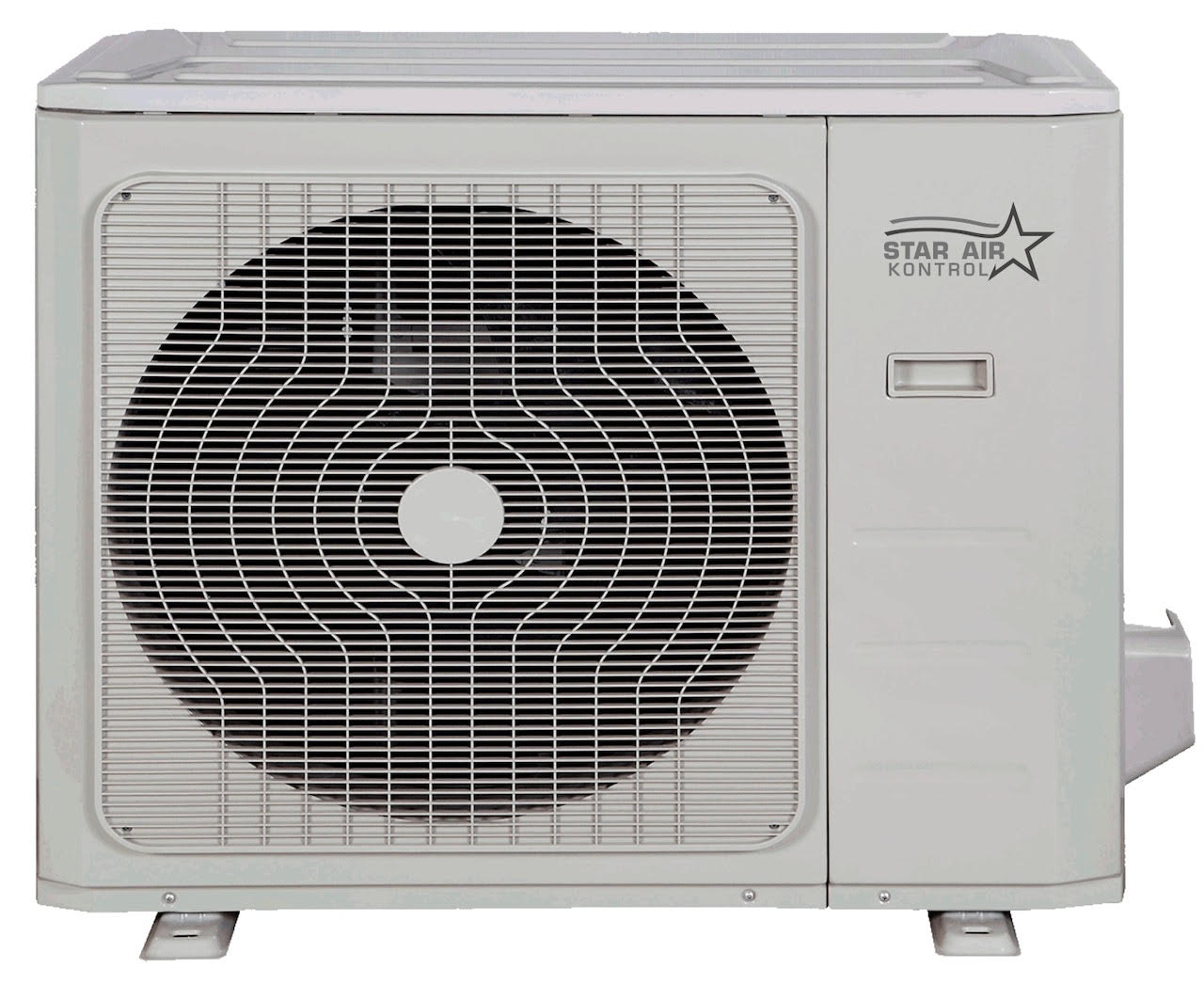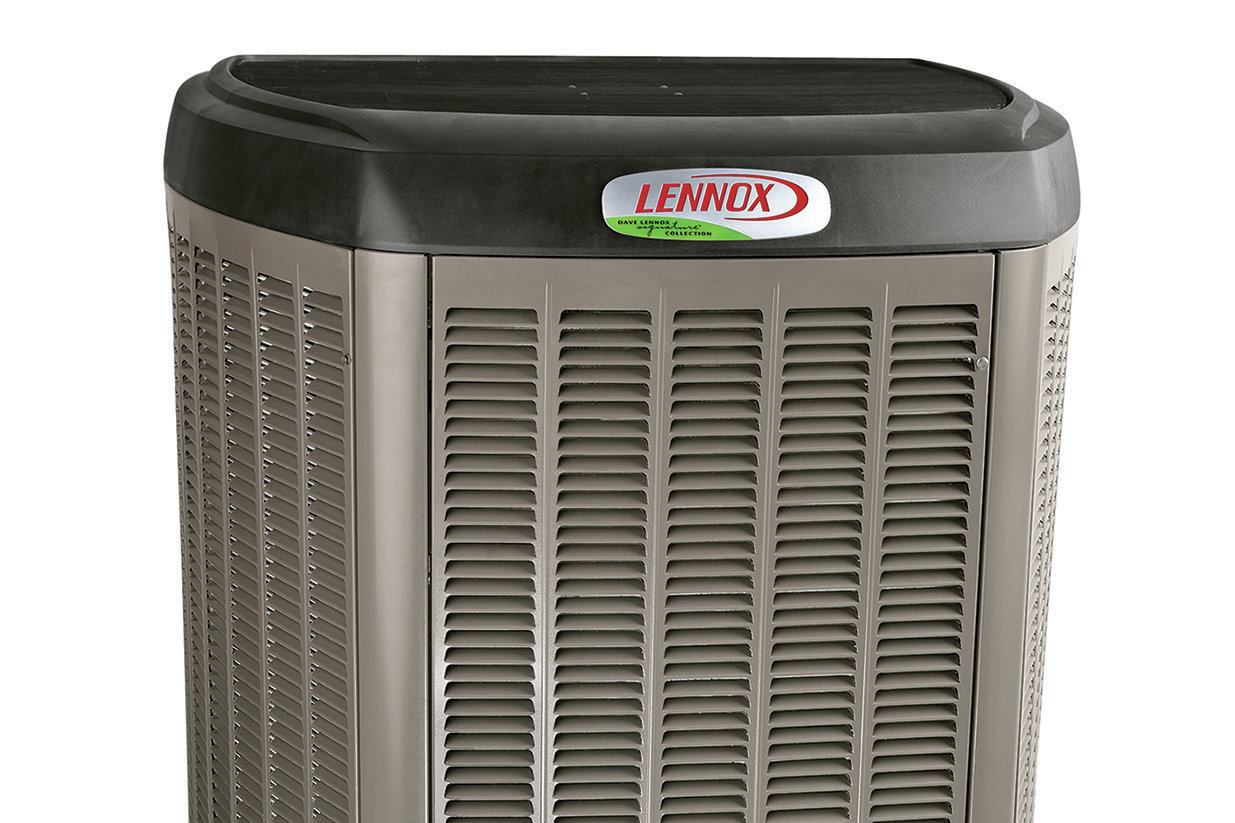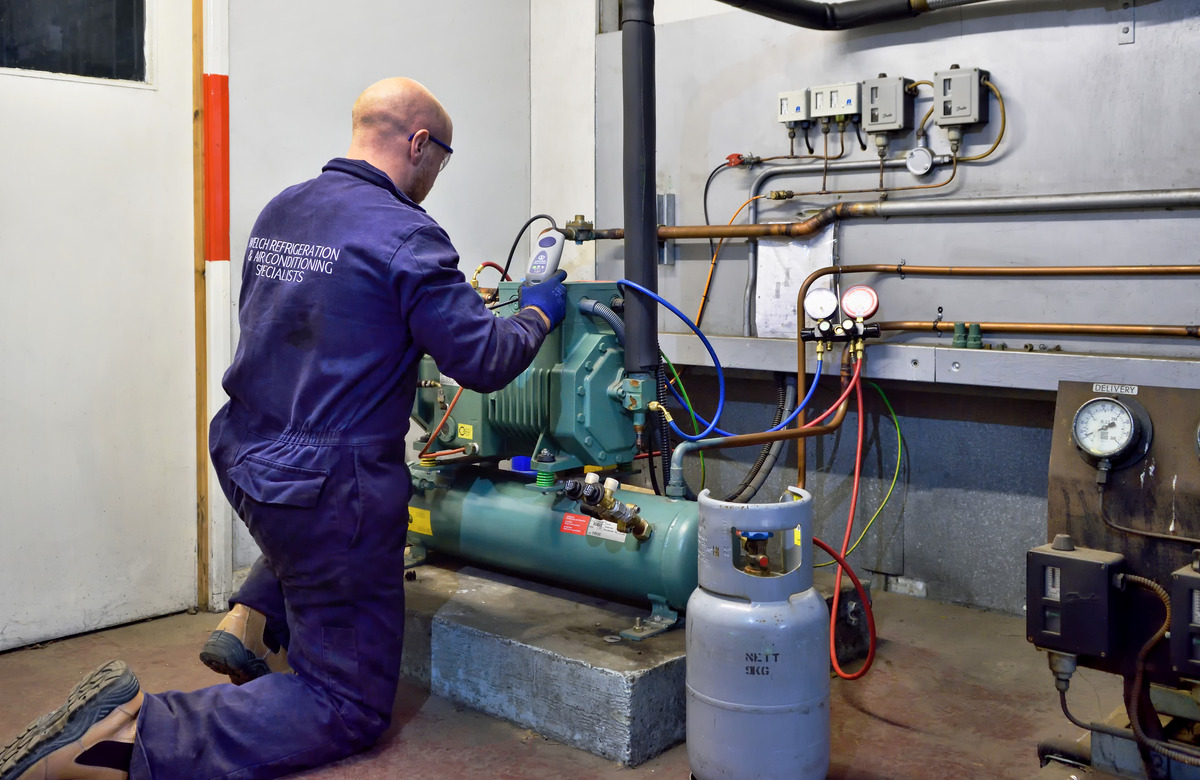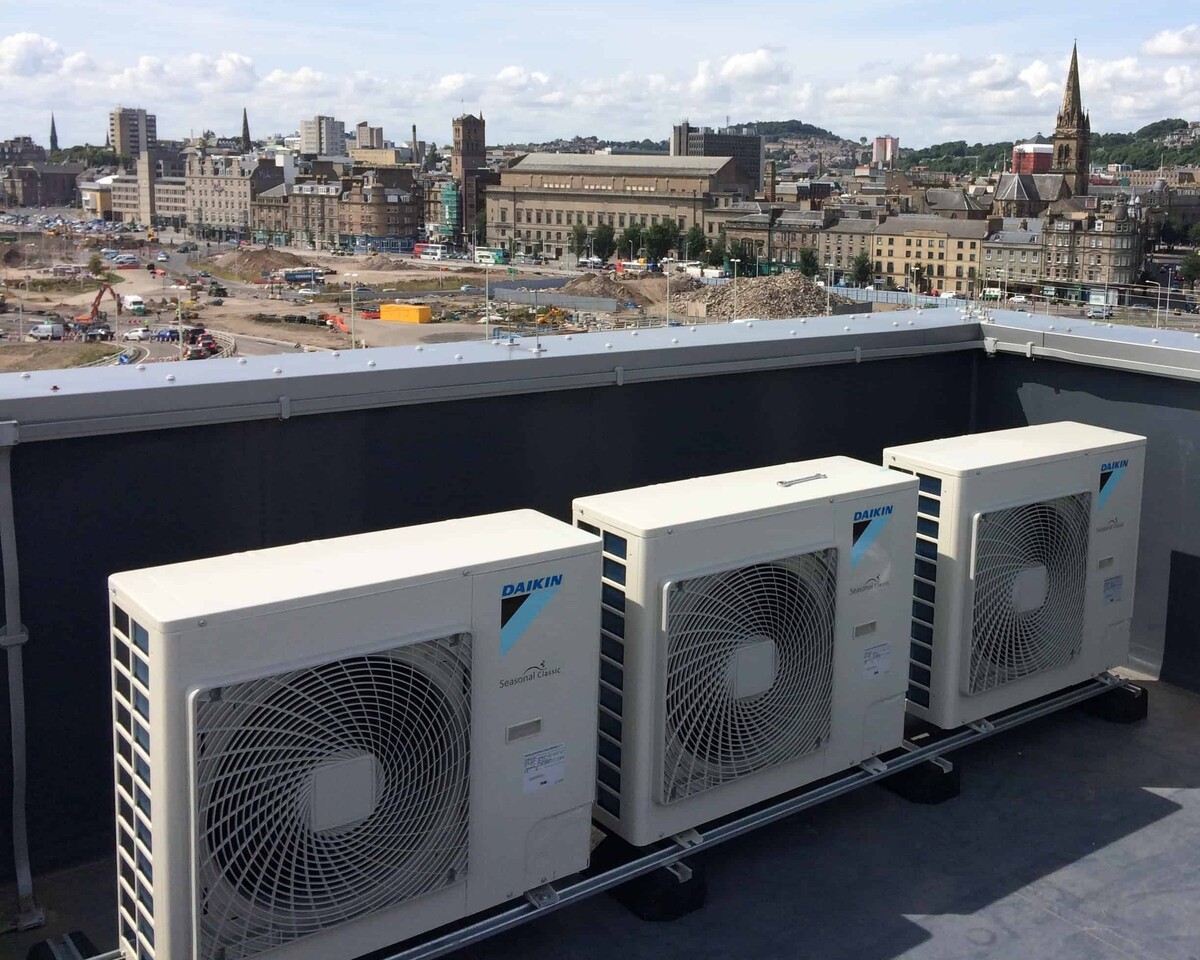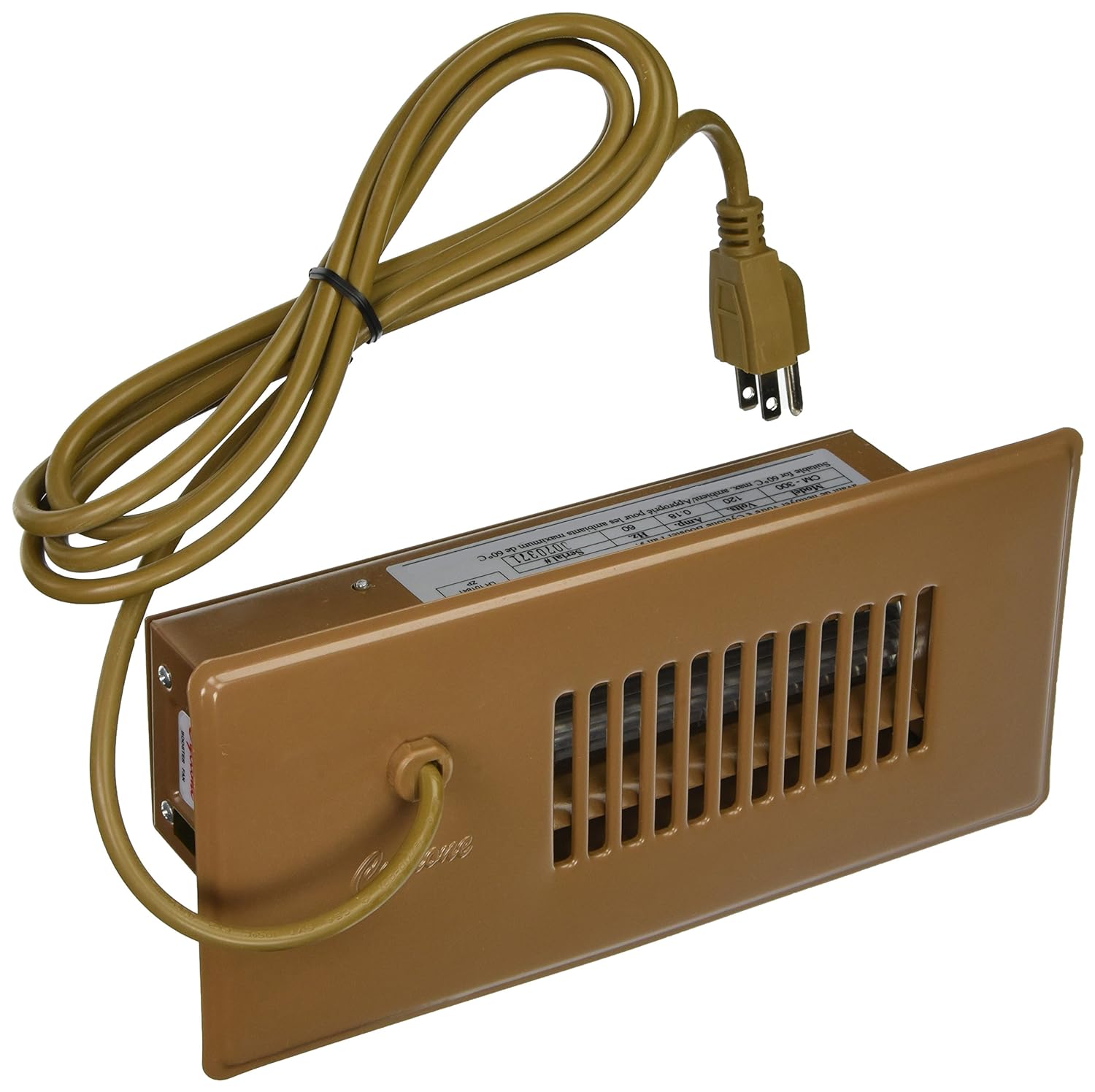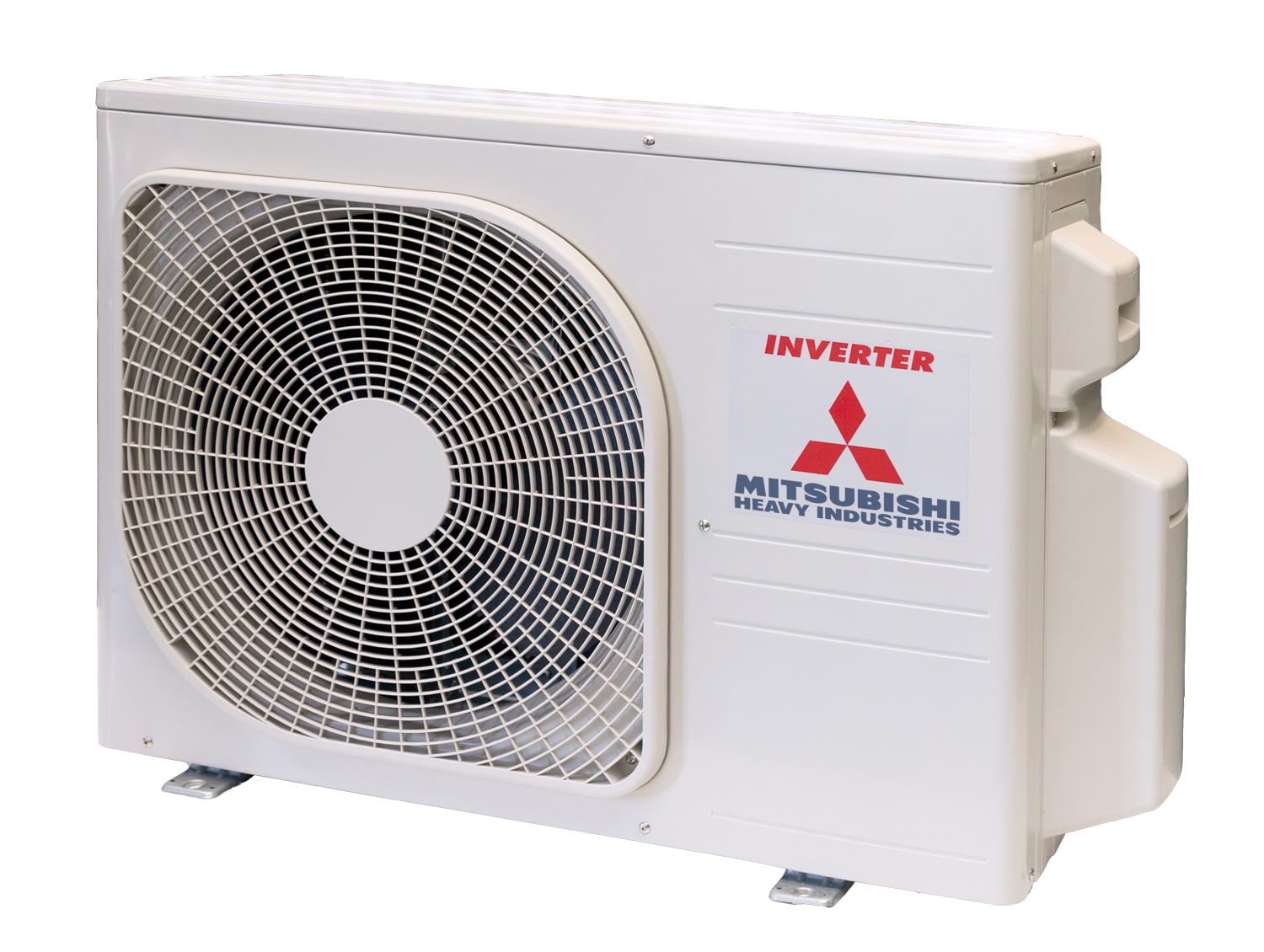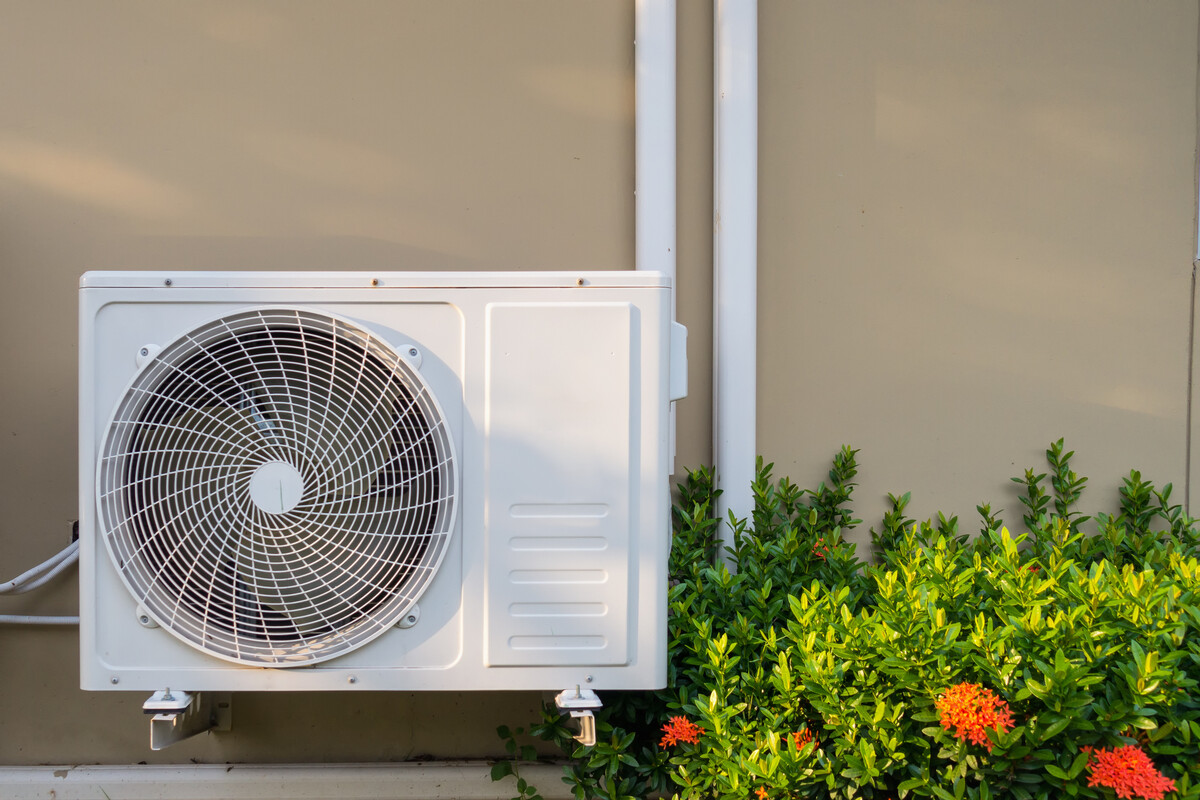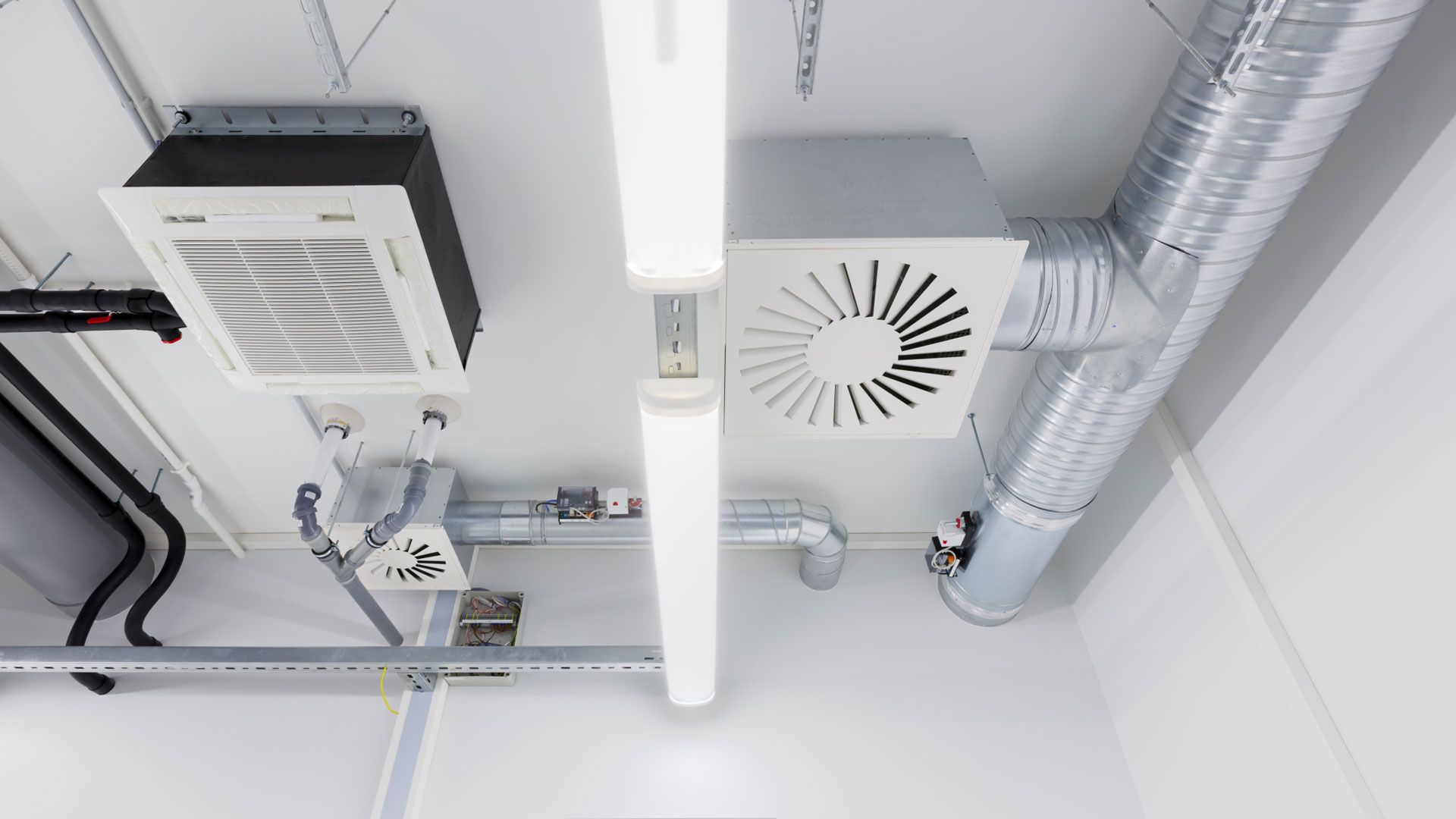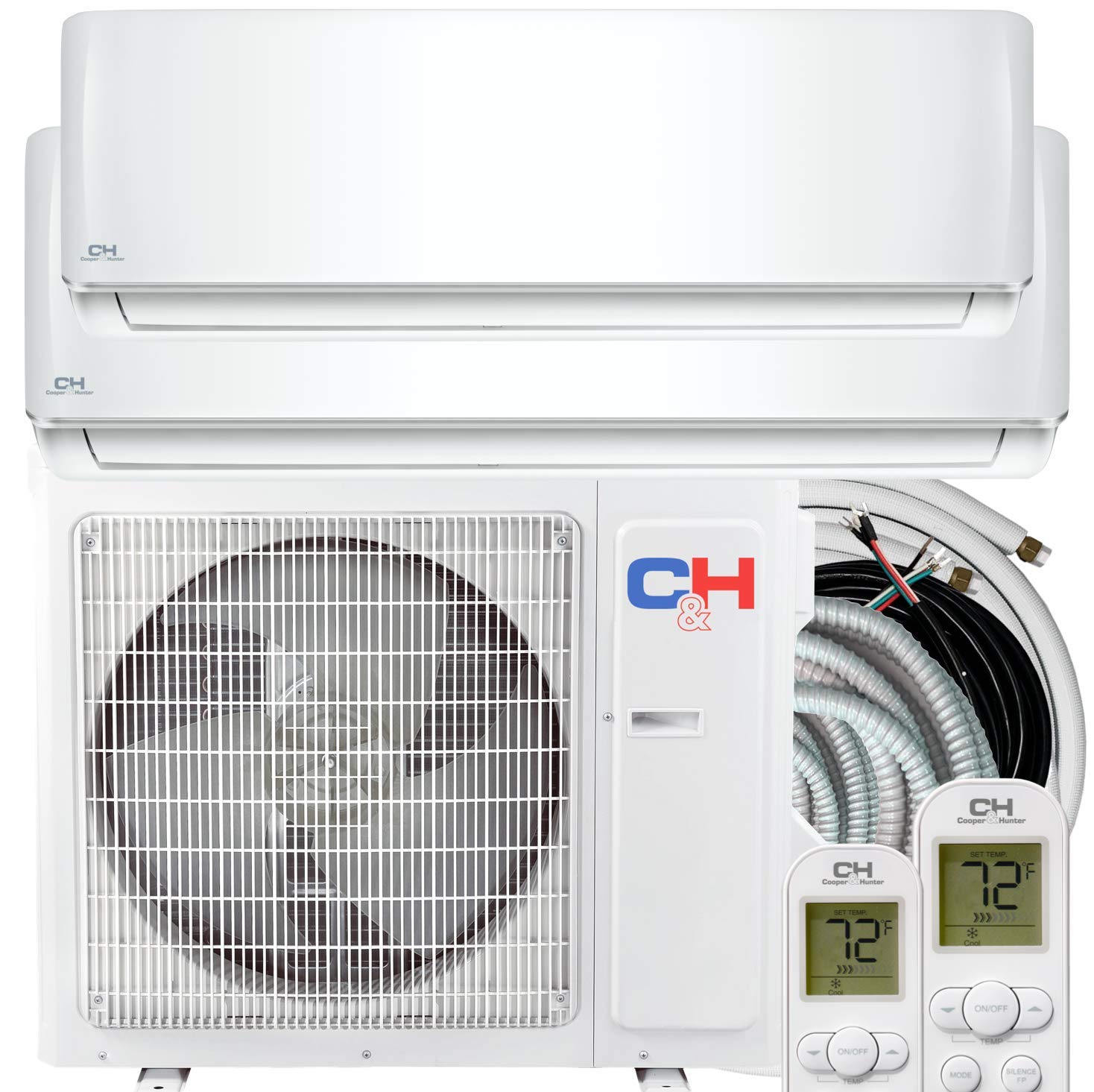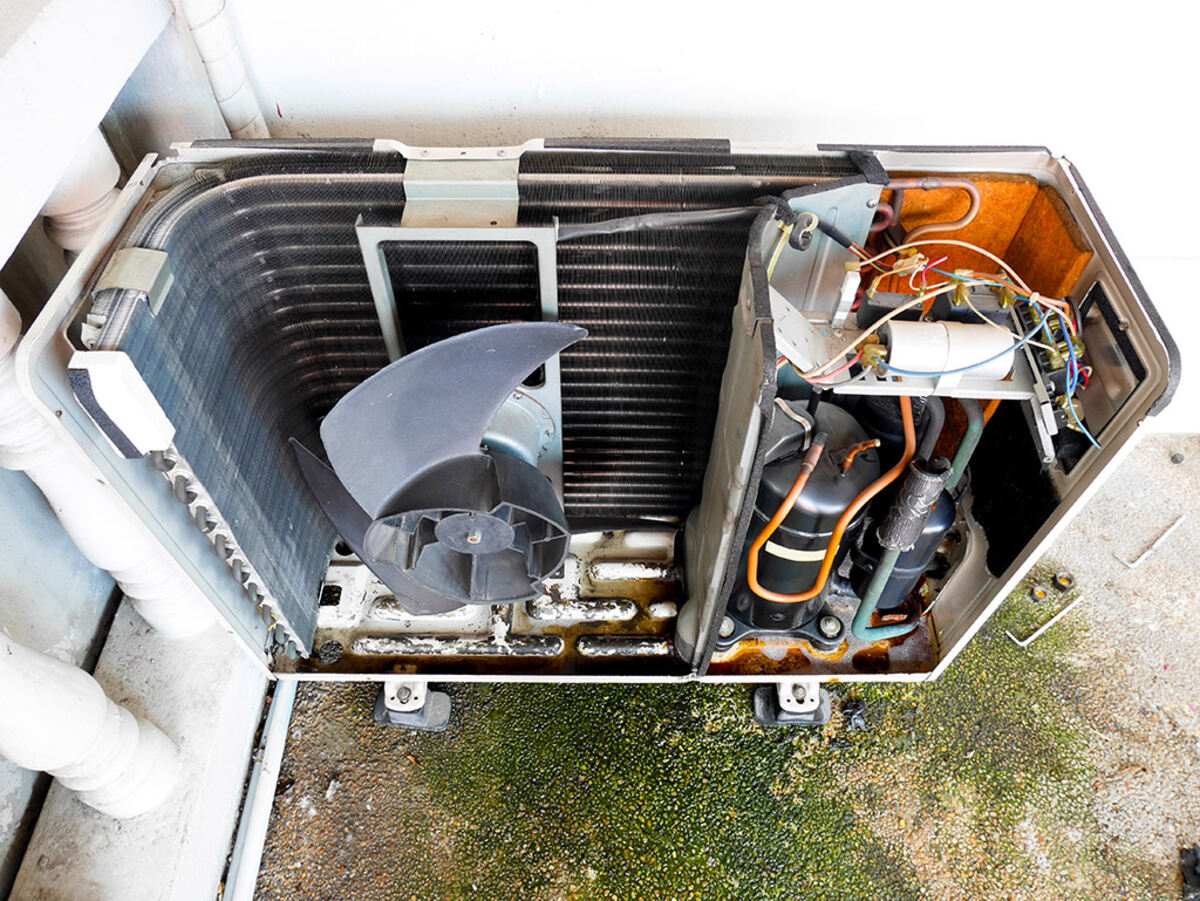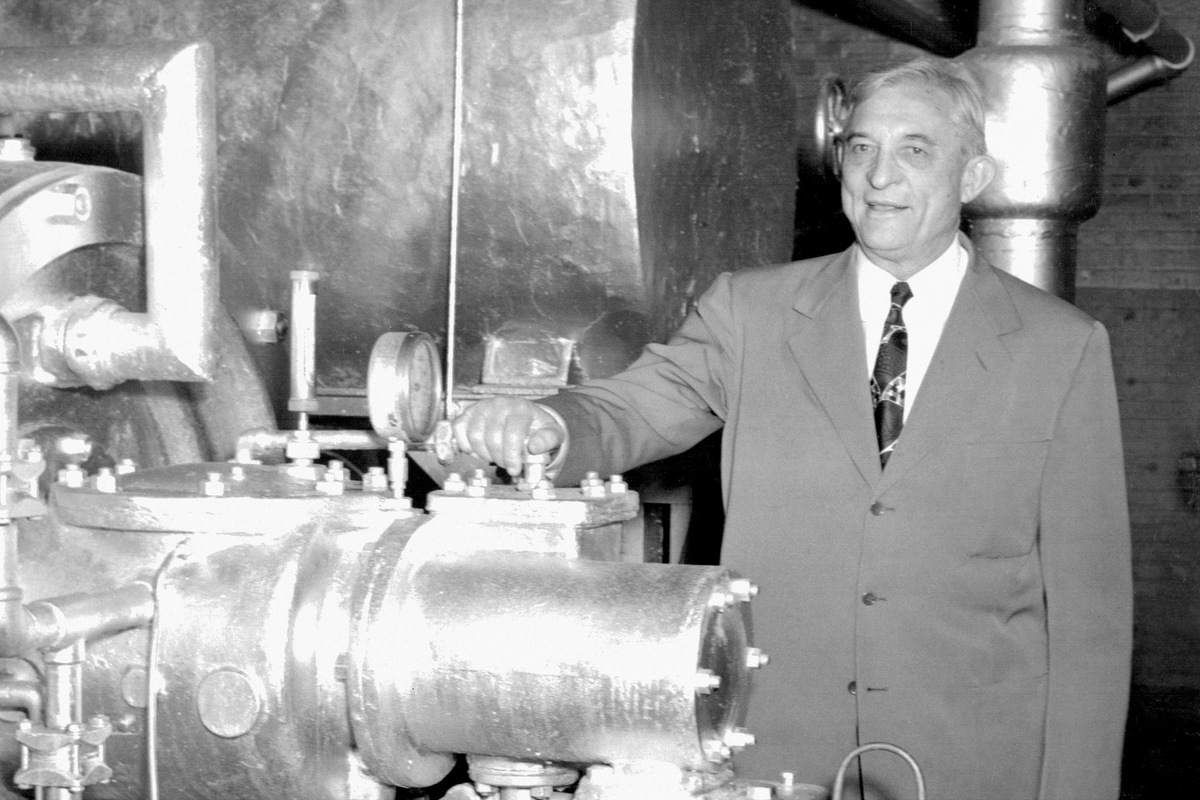Home>Home Maintenance>What Is Humidity Control In An Air Conditioning Unit
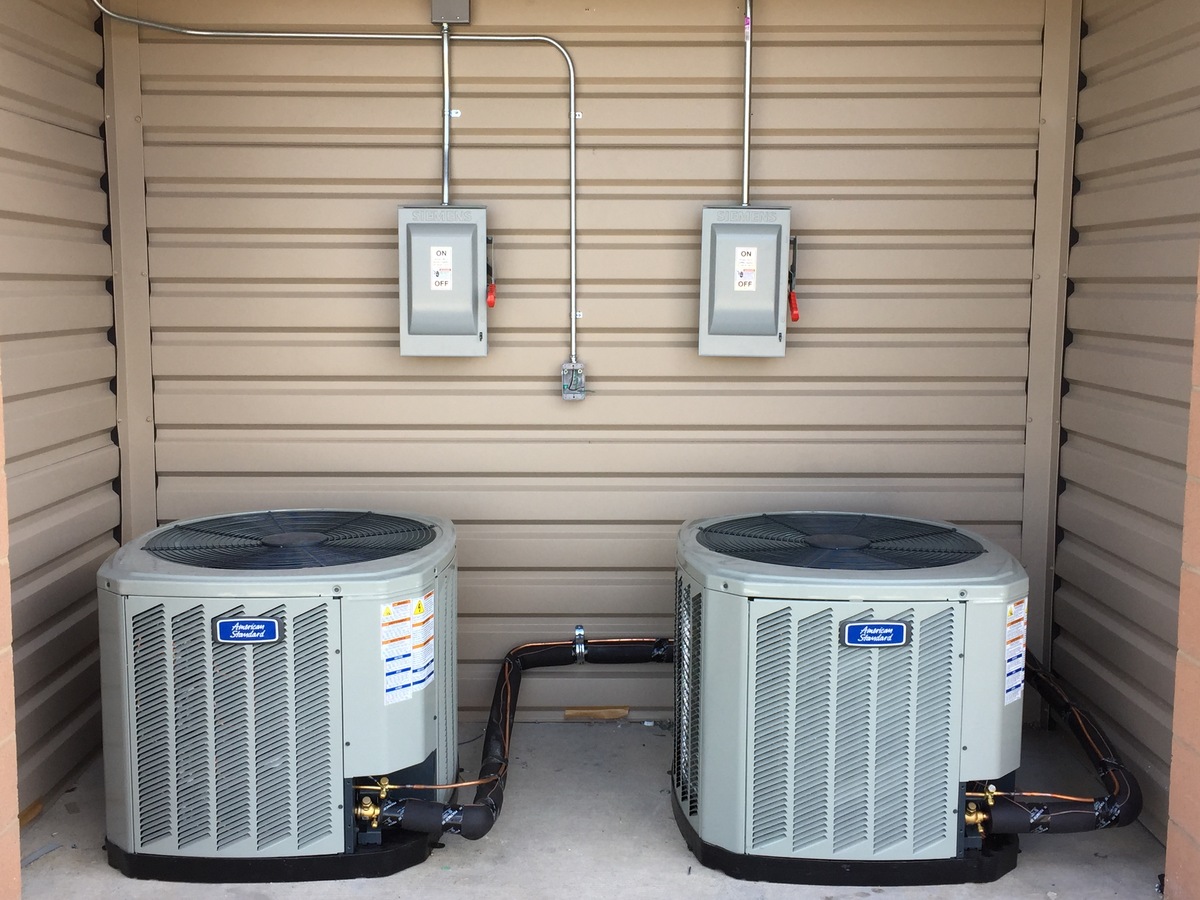

Home Maintenance
What Is Humidity Control In An Air Conditioning Unit
Modified: March 6, 2024
Learn about humidity control in air conditioning units and how it contributes to effective home maintenance. Improve indoor air quality and comfort with proper humidity levels.
(Many of the links in this article redirect to a specific reviewed product. Your purchase of these products through affiliate links helps to generate commission for Storables.com, at no extra cost. Learn more)
Introduction
Welcome to the world of air conditioning units, where comfort meets convenience. In today’s modern age, air conditioning has become an integral part of our everyday lives, providing us respite from the sweltering heat during the summer months. While most of us are familiar with the basic functions of an air conditioner, such as cooling the air and maintaining a comfortable temperature, there is another essential aspect that often goes unnoticed – humidity control.
Humidity refers to the amount of moisture or water vapor present in the air. It plays a crucial role in maintaining indoor air quality and overall comfort levels. When humidity levels are too high or too low, it can have adverse effects on both our health and the integrity of our homes. This is why humidity control is a vital feature of air conditioning units, ensuring a balanced and optimal indoor environment.
In this article, we will explore the importance of humidity control in air conditioning units, how humidity affects indoor air quality, the different mechanisms for humidity control, and the pros and cons of various methods. We will also provide you with essential tips for maintenance and troubleshooting to ensure that your air conditioning unit continues to provide efficient and effective humidity control.
So, let’s dive into the fascinating world of humidity control and discover how it can enhance our comfort and well-being in our homes and businesses.
Key Takeaways:
- Humidity control in air conditioning units is essential for maintaining a comfortable and healthy indoor environment. It prevents mold growth, promotes energy efficiency, and protects our belongings from damage.
- Choosing the right humidity control system and performing regular maintenance are crucial for effective humidity control. By considering factors like budget, energy efficiency, and compatibility, we can ensure a pleasant and balanced indoor environment.
Read more: Which Fuse Controls Air Conditioning
Importance of Humidity Control in Air Conditioning Units
Humidity control is a critical aspect of air conditioning units that often goes unnoticed. Maintaining proper humidity levels is essential for creating a comfortable indoor environment and ensuring good indoor air quality. Let’s explore why humidity control is so important.
1. Comfort: High humidity levels can make the air feel sticky and uncomfortable, while low humidity can cause dryness and discomfort. By controlling humidity, air conditioning units can create an optimal balance that allows us to feel comfortable throughout the day.
2. Health: Humidity control in air conditioning units helps prevent the growth of mold, bacteria, and other allergens. High humidity can create a breeding ground for these harmful substances, leading to respiratory problems and allergies. On the other hand, low humidity can cause dryness in the nasal passages and skin, increasing the risk of irritation and infections. By maintaining proper humidity levels, air conditioning units contribute to a healthier indoor environment.
3. Energy Efficiency: When humidity levels are too high, the air feels warmer than it actually is, leading to the temptation to lower the temperature setting on the air conditioner. This increases energy consumption and places a strain on the unit. By controlling humidity, air conditioning units can help maintain a comfortable temperature without excessive energy usage.
4. Preservation of Materials: Humidity control is not only crucial for our comfort but also for preserving our valuable belongings. High humidity levels can cause damage to wooden furniture, electronics, and artwork, leading to warping, corrosion, and deterioration. Air conditioning units with humidity control features help protect these items and prolong their lifespan.
5. Preventing Condensation: Excessive moisture in the air can lead to condensation on windows, walls, and other surfaces. This can result in the growth of mold, mildew, and damage to the structure of the building. By controlling humidity, air conditioning units prevent condensation issues, reducing the risk of mold growth and structural damage.
Overall, humidity control in air conditioning units is vital for creating a comfortable, healthy, and energy-efficient indoor environment. It helps maintain optimal humidity levels, prevents the growth of harmful substances, preserves our belongings, and prevents condensation-related problems. Investing in an air conditioning unit with humidity control capabilities is a wise choice for ensuring a pleasant and safe living or working space.
How Humidity Affects Indoor Air Quality
Humidity plays a significant role in determining the quality of indoor air. It affects not only our comfort but also the health and well-being of occupants. Let’s explore how humidity levels impact indoor air quality.
1. Allergen Control: High humidity levels provide an ideal environment for the growth of allergens such as mold, dust mites, and bacteria. These allergens can trigger respiratory issues, allergies, and asthma attacks. By controlling humidity, air conditioning units can help prevent the proliferation of these allergens, improving indoor air quality and reducing the risk of health problems.
2. Dust and Particle Control: Excessive moisture in the air can cause dust particles to become heavier and settle on surfaces. This can lead to an accumulation of dust, dirt, and other particles in the indoor environment. Air conditioning units that regulate humidity levels can help reduce the amount of dust and particles in the air, promoting cleaner and healthier indoor air quality.
3. Odor Control: High humidity can contribute to the growth of odor-causing bacteria and mold, resulting in unpleasant smells in the indoor environment. By maintaining optimal humidity levels, air conditioning units can help control these odors, ensuring a more pleasant and fresh-smelling atmosphere.
4. Skin and Respiratory Comfort: Dry air, caused by low humidity levels, can lead to dryness and irritation of the skin, eyes, and nasal passages. This can result in discomfort, itching, and even nosebleeds. Additionally, dry air can worsen respiratory conditions such as asthma and allergies. By regulating humidity, air conditioning units can help maintain proper moisture levels, reducing these discomforts and promoting better respiratory health.
5. Dampness and Mold Prevention: High humidity levels can lead to excessive moisture in the air, creating a damp and ideal environment for the growth of mold and mildew. These fungal growths not only contribute to respiratory problems but are also unsightly and can cause structural damage to buildings. With humidity control, air conditioning units can help prevent the development of dampness and mold, ensuring a healthier and safer indoor environment.
By managing humidity levels, air conditioning units play a crucial role in improving indoor air quality. They contribute to the control of allergens, dust particles, and odors, while also promoting skin and respiratory comfort. Additionally, they help prevent dampness and mold growth, protecting both the health of occupants and the integrity of the building. Investing in a humidity-controlled air conditioning unit can greatly enhance the quality of the indoor environment and promote a healthier and more comfortable living or working space.
Understanding Relative Humidity Levels in Air Conditioning Units
Relative humidity is a crucial factor to consider when it comes to maintaining optimal humidity levels in air conditioning units. Understanding relative humidity and its impact on indoor environments can help us better control the humidity levels for maximum comfort and health benefits.
Relative humidity refers to the amount of moisture present in the air compared to the maximum amount of moisture the air can hold at a particular temperature. It is expressed as a percentage. For example, a relative humidity of 50% means the air is holding half of the moisture it can potentially hold at that temperature.
When it comes to air conditioning units, there are generally recommended relative humidity levels to maintain for different purposes:
- Comfort: For optimal comfort, a relative humidity level between 30% and 60% is recommended. This range helps prevent the air from feeling too dry or too humid, providing a comfortable environment for occupants.
- Health: To maintain a healthy indoor environment, it is recommended to keep relative humidity levels between 40% and 50%. This range helps prevent the growth of mold, bacteria, and other allergens, reducing the risk of respiratory issues and allergies.
- Energy Efficiency: Lower relative humidity levels can make the air feel cooler, allowing you to set the temperature on the air conditioner a bit higher. This can result in energy savings and increased efficiency.
- Precise Control: Certain environments require more precise control of humidity levels. For example, in museums, archival rooms, or data centers, where sensitive materials or equipment are stored, maintaining a relative humidity level between 40% and 50% is crucial to prevent damage or deterioration.
To monitor and control relative humidity levels in air conditioning units, specialized devices called hygrometers are used. These devices measure the moisture content in the air and provide accurate readings of relative humidity. By regularly monitoring the readings, adjustments can be made to the air conditioning unit to ensure the desired humidity levels are maintained.
It’s important to note that relative humidity levels can vary based on the season and geographical location. In humid climates, it may be necessary to use dehumidifiers in addition to air conditioning units to control moisture levels effectively.
By understanding relative humidity levels and the recommended ranges for different purposes, you can make informed decisions and adjustments to your air conditioning unit to maintain optimal comfort, promote good health, and improve energy efficiency in your indoor environment.
Humidity Control Mechanisms in Air Conditioning Units
Humidity control is an integral function of air conditioning units, ensuring a comfortable and healthy indoor environment. Let’s explore the different mechanisms that air conditioning units use to control humidity levels.
1. Cooling and Dehumidification: The primary mechanism for humidity control in air conditioning units is cooling and dehumidification. When warm air enters the unit, it passes over evaporator coils that cool the air and remove moisture. As the air cools, the moisture in the air condenses into water droplets, which are collected and drained away. The cooled and dehumidified air is then circulated back into the room, creating a more comfortable and less humid environment.
2. Variable Speed Compressors: Some modern air conditioning units are equipped with variable speed compressors. These compressors allow the system to adjust its cooling capacity based on the temperature and humidity levels in the room. By running at lower speeds, the unit can dehumidify the air more effectively without overcooling the room, maintaining a comfortable humidity level.
3. Fan Speed Control: Air conditioning units with adjustable fan speeds provide additional control over humidity levels. By running the fan at a slower speed, the air conditioner can remove more moisture from the air. This helps to reduce humidity levels and create a more comfortable indoor environment.
4. Humidistat Control: Some advanced air conditioning units feature built-in humidistats. A humidistat measures the humidity levels in the room and automatically adjusts the operation of the air conditioner to maintain the desired humidity level. This provides precise control over humidity, ensuring optimal comfort and preventing the air from becoming too dry or too humid.
5. Ventilation Mechanisms: Proper ventilation is essential for humidity control. Air conditioning units with ventilation capabilities can bring in fresh air from outside and remove stale and humid air from the indoors. This helps to maintain a healthy and balanced humidity level in the room.
6. Separate Dehumidifier Units: In some cases, especially in areas with high humidity levels, standalone dehumidifier units can be used in conjunction with air conditioning units to provide enhanced humidity control. These units work independently to remove excess moisture from the air, allowing the air conditioner to focus on cooling the room more efficiently.
By employing these humidity control mechanisms, air conditioning units can create a comfortable and healthy indoor environment. Whether through cooling and dehumidification, variable speed compressors, fan speed control, humidistat control, ventilation mechanisms, or standalone dehumidifiers, these mechanisms work together to ensure optimal humidity levels and promote overall comfort and well-being.
Types of Humidity Control Systems in Air Conditioning Units
There are several types of humidity control systems available in air conditioning units that help regulate and maintain optimal humidity levels in indoor environments. Let’s explore some of the common types of humidity control systems:
1. Manual Humidity Control: In some air conditioning units, humidity control is achieved manually by adjusting the temperature or fan speed settings. By lowering the temperature or increasing the fan speed, the unit can dehumidify the air to some extent. However, this method requires constant monitoring and adjustment to maintain the desired humidity level.
2. Electric Humidistat: An electric humidistat is a device that measures the humidity levels in the room and automatically adjusts the operation of the air conditioning unit to maintain the desired humidity level. When the humidity exceeds the set point, the unit activates the cooling and dehumidification processes to reduce the moisture in the air. Once the desired humidity level is achieved, the unit switches to a standby mode. Electric humidistats provide precise and automated humidity control, ensuring optimal comfort and preventing excessive dryness or humidity.
3. Integrated Humidity Control Systems: Some advanced air conditioning units come with integrated humidity control systems. These systems are designed to actively monitor and regulate humidity levels in real-time. They utilize sensors to measure the moisture content in the air and adjust the cooling and dehumidification processes accordingly. Integrated humidity control systems offer efficient and effective control over humidity levels, providing a comfortable and healthy indoor environment.
4. Whole-Home Dehumidification Systems: In certain regions or climates with high humidity levels, air conditioning units may be equipped with whole-home dehumidification systems. These systems are designed to work in tandem with the air conditioning unit and operate independently to remove excess moisture from the air. They are typically installed in the ductwork of the HVAC system and provide thorough humidity control throughout the entire home.
5. Standalone Dehumidifiers: Standalone dehumidifiers can also be used in conjunction with air conditioning units to provide additional humidity control. These units work independently and are placed in specific areas where humidity is a concern, such as basements or bathrooms. Standalone dehumidifiers remove excess moisture from the air and create a more comfortable and balanced indoor environment.
It’s important to consider the specific needs and conditions of your indoor space when selecting the appropriate humidity control system for your air conditioning unit. Factors such as climate, room size, and occupancy levels will play a role in determining the most suitable choice. Consulting with HVAC professionals can help you identify the best humidity control system for your specific requirements.
By utilizing these different types of humidity control systems, air conditioning units can effectively regulate moisture levels, ensuring optimal comfort, health, and energy efficiency in indoor environments.
Pros and Cons of Different Humidity Control Methods
When it comes to humidity control in air conditioning units, various methods and systems are available. Each method has its own advantages and disadvantages. Let’s explore the pros and cons of different humidity control methods:
1. Manual Humidity Control:
Pros:
- Simplicity: Manual control allows for easy adjustments by the user, typically through temperature or fan speed settings.
- Cost-Effective: Manual control methods are typically more affordable since they do not require additional sensors or integrated systems.
Cons:
- Constant Monitoring: Manual control requires regular monitoring and adjustment to maintain the desired humidity level, which can be time-consuming and inconvenient.
- Limited Precision: Manual control methods may not offer precise humidity control, leading to fluctuations in humidity levels.
2. Electric Humidistat:
Pros:
- Precision: Electric humidistats provide accurate and automated humidity control, maintaining a consistent humidity level without constant user intervention.
- Energy Efficiency: Electric humidistats activate the air conditioning unit only when necessary, helping to conserve energy and reduce utility costs.
Cons:
- Initial Cost: The installation and setup of electric humidistats may involve additional expenses compared to manual control methods.
- Dependence on Sensors: Electric humidistats rely on sensors to measure humidity levels, and a malfunctioning sensor can affect the accuracy of the system.
3. Integrated Humidity Control Systems:
Pros:
- Precision and Automation: Integrated systems can accurately monitor and adjust humidity levels in real-time, providing optimal comfort and convenience.
- Enhanced Comfort: These systems ensure a consistent and balanced humidity level throughout the indoor space, promoting better health and well-being.
Cons:
- Cost: Integrated systems can be more expensive to install and maintain compared to manual or simple control methods.
- Complexity: The complexity of integrated systems may require professional installation and periodic maintenance to ensure proper functioning.
4. Whole-Home Dehumidification Systems:
Pros:
- Comprehensive Control: Whole-home dehumidification systems have the ability to effectively control humidity levels throughout the entire house, providing consistent comfort.
- Reduced Mold and Allergens: These systems help prevent the growth of mold, mildew, and allergens, promoting a healthier indoor environment.
Cons:
- Installation Complexity: Installing a whole-home dehumidification system may require modifications to the existing HVAC system, potentially increasing the installation cost.
- Ongoing Maintenance: Maintaining and servicing the system periodically is necessary to ensure its continued effectiveness.
5. Standalone Dehumidifiers:
Pros:
- Flexibility: Standalone dehumidifiers can be placed in specific areas of concern, allowing for targeted humidity control in problem areas.
- Affordability: These units are typically more cost-effective and accessible compared to integrated or whole-home systems.
Cons:
- Restricted Range: Standalone dehumidifiers only control humidity in a localized area, which may not be sufficient for larger spaces or whole-home humidity control.
- Space and Aesthetic Considerations: These units require additional floor or wall space and may not blend seamlessly with the existing interior design.
When selecting a humidity control method, consider factors such as budget, desired precision, convenience, and the specific needs of the indoor environment. Consulting with HVAC professionals can provide valuable guidance and help you choose the most suitable humidity control method for your air conditioning unit.
Factors to Consider When Choosing a Humidity Control System for an Air Conditioning Unit
When selecting a humidity control system for your air conditioning unit, it is important to consider several factors to ensure you choose the right system that meets your specific needs. Let’s explore the key factors to consider:
1. Indoor Environment: Assess the size and layout of the indoor space where the humidity control system will be used. Consider whether you need to control humidity in a single room, multiple rooms, or the entire house. This will help determine whether a standalone dehumidifier, integrated system, or whole-home dehumidification system is most suitable.
2. Humidity Level Requirements: Determine the desired humidity level for your indoor space. Different humidity control methods offer varying degrees of precision in maintaining humidity levels. If you require precise and automated control, an electric humidistat or integrated system may be the best option.
3. Budget: Establish a budget for your humidity control system. Consider the initial installation costs, ongoing maintenance expenses, and any additional features or accessories that may affect the overall cost. Compare the costs of different systems and choose the one that fits within your budget while still meeting your requirements.
4. Energy Efficiency: Look for humidity control systems that offer energy-efficient features. Systems with variable speed compressors, fan speed control, or automatic shut-off functions can help save energy and reduce utility costs. Consider the energy efficiency ratings and certifications of different systems before making a decision.
5. Ease of Use and Maintenance: Evaluate the ease of use and maintenance requirements of the humidity control system. Some systems may require regular cleaning, filter replacements, or professional servicing. Choose a system that is user-friendly and convenient to maintain to ensure its long-term effectiveness and reliability.
6. Compatibility with Existing System: If you already have an air conditioning unit in place, ensure that the humidity control system is compatible and can integrate seamlessly with your existing system. Consider factors such as ductwork modifications, wiring compatibility, and control compatibility to ensure a hassle-free installation process.
7. Noise Level: Some humidity control systems, especially standalone dehumidifiers, can produce noise during operation. Consider the noise level of the system and its impact on your comfort and daily activities. Choose a system that operates within acceptable noise levels for your specific environment.
8. Brand Reputation and Warranty: Research different brands and their reputation for producing reliable and durable humidity control systems. Read customer reviews and inquire about warranty coverage. A reputable brand with a favorable warranty can provide peace of mind and ensure quality performance and customer support.
9. Professional Guidance: Seeking professional advice from HVAC experts can be beneficial when choosing a humidity control system. They can assess your specific needs, perform a thorough evaluation of your indoor environment, and recommend the most suitable humidity control solution based on their expertise and experience.
By carefully considering these factors, you can make an informed decision when choosing a humidity control system for your air conditioning unit. Selecting the right system will help maintain optimal humidity levels, enhance comfort, and promote a healthy indoor environment in your home or workplace.
To control humidity in an air conditioning unit, set the fan to auto mode. This allows the AC to remove moisture from the air more effectively, keeping the indoor environment comfortable.
Read more: What Is Climate Control Air Conditioning
Maintenance and Troubleshooting Tips for Humidity Control in Air Conditioning Units
Proper maintenance and troubleshooting are essential for ensuring effective humidity control in air conditioning units. By performing regular maintenance and addressing any issues promptly, you can ensure that your unit continues to provide optimal comfort and humidity control. Here are some maintenance and troubleshooting tips:
Maintenance Tips:
- Clean or Replace Filters: Regularly clean or replace the filters in your air conditioning unit to prevent dirt and debris buildup. Clogged filters can obstruct airflow and reduce the unit’s efficiency in dehumidifying the air. Refer to the manufacturer’s instructions for guidance on filter cleaning or replacement frequency.
- Clean and Inspect Coils: Clean the evaporator and condenser coils of your air conditioning unit to remove any dirt or debris. Dirty coils can hinder the unit’s ability to cool and dehumidify the air effectively. Inspect the coils for any signs of damage or corrosion and address any issues promptly.
- Check and Clean Drainage System: Ensure that the drainage system of your air conditioning unit is clear and functioning properly. Clogged or blocked drains can lead to water buildup, which can affect the unit’s dehumidification process. Clean the drain lines and pans regularly to prevent any blockages.
- Inspect and Seal Air Leaks: Check for any air leaks around windows, doors, or vents. Air leaks can allow moisture to enter the indoor space and compromise humidity control. Seal any gaps or cracks with weatherstripping or caulking to improve energy efficiency and humidity control.
- Monitor and Adjust Humidistat: If your air conditioning unit has a humidistat, monitor the humidity levels regularly and adjust the humidistat settings as needed to maintain the desired humidity level. Refer to the manufacturer’s instructions for guidance on adjusting the humidistat.
Troubleshooting Tips:
- Inadequate Cooling or Dehumidification: If your air conditioning unit is not cooling or dehumidifying the air effectively, check the filters and coils for dirt or debris. Clean or replace them if necessary. Ensure that the unit’s fan speed is set appropriately for optimal dehumidification.
- Water or Moisture Leakage: If water or moisture is leaking from your air conditioning unit, it could be due to a clogged drainage system or a damaged drain pan. Check and clean the drain lines and pans, and repair or replace any damaged components as needed.
- Excessive Humidity: If your air conditioning unit is unable to control humidity effectively, check for any air leaks around windows, doors, or vents. Seal any gaps or cracks to prevent moisture infiltration. If the issue persists, consider consulting a professional HVAC technician for further assessment and troubleshooting.
- Unusual Noises or Odors: If you notice unusual noises or odors coming from your air conditioning unit, it could indicate a mechanical issue or the presence of mold or mildew. In such cases, it’s best to turn off the unit and seek professional assistance to diagnose and address the problem.
Remember to refer to the manufacturer’s instructions for specific maintenance guidelines and troubleshooting tips tailored to your air conditioning unit. Additionally, scheduling regular professional maintenance checks can help identify and address any potential issues before they become major problems.
By following these maintenance and troubleshooting tips, you can ensure effective humidity control in your air conditioning unit, creating a comfortable and healthy indoor environment for your home or business.
Conclusion
Humidity control is a crucial aspect of air conditioning units, contributing to our comfort, health, and overall well-being in indoor environments. Proper humidity control helps maintain optimal moisture levels, preventing the growth of mold, bacteria, and allergens, while also ensuring a comfortable and pleasant atmosphere.
In this article, we explored the importance of humidity control in air conditioning units and how it affects indoor air quality. We discussed the various mechanisms used for humidity control, including cooling and dehumidification, variable speed compressors, and humidistat control. We also examined different types of humidity control systems, such as manual control, electric humidistats, integrated systems, whole-home dehumidification systems, and standalone dehumidifiers, each with its own pros and cons.
When choosing a humidity control system, we highlighted the factors to consider, including the indoor environment, humidity level requirements, budget, energy efficiency, ease of use and maintenance, compatibility with existing systems, noise level, brand reputation, and warranty.
Maintaining proper humidity control in air conditioning units is essential. We provided maintenance tips such as regular filter cleaning or replacement, coil cleaning and inspection, checking and cleaning the drainage system, sealing air leaks, and monitoring and adjusting the humidistat. We also discussed troubleshooting tips for issues related to cooling or dehumidification, water leakage, excessive humidity, and unusual noises or odors.
In conclusion, humidity control in air conditioning units plays a crucial role in creating a comfortable, healthy, and energy-efficient indoor environment. By understanding the importance of humidity control, selecting the right system, and conducting regular maintenance, we can ensure that our air conditioning units effectively control humidity levels, and provide us with a pleasant and conducive living or working space.
Remember to consult with professionals if you encounter any major issues with your air conditioning unit or if you need assistance in choosing and installing a humidity control system. By taking proactive measures, you can enjoy the benefits of optimal humidity control and create a space where you feel comfortable, healthy, and refreshed.
Frequently Asked Questions about What Is Humidity Control In An Air Conditioning Unit
Was this page helpful?
At Storables.com, we guarantee accurate and reliable information. Our content, validated by Expert Board Contributors, is crafted following stringent Editorial Policies. We're committed to providing you with well-researched, expert-backed insights for all your informational needs.
